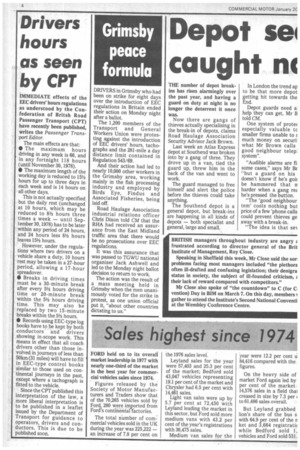Drivers hours as seen by CPT
Page 6

If you've noticed an error in this article please click here to report it so we can fix it.
IMMEDIATE effects of the EEC drivers' hours regulations as understood by the Confederation of Britsh Road Passenger Transport (CPT) have recently been published, writes the Passenger Transport Editor.
The main effects are that: • The maximum hours driving in any week is 66, and in any fortnight 118 hours (until November 30, 1978).
• The maximum length of the working day is reduced to 151/2 hours for up to three days in each week and is 14 hours on all other days.
This is not actually specified. but the daily rest (unchanged at 10 hours, which may be reduced to 81/2 hours three times a week — until September 30, 1978) has to be later within any period of 24 hours, and 24 hours less 81/2 hours leaves 151/2 hours.
However, under the regulations where two drivers on a vehicle share a duty, 10 hours rest may be taken in a 27-hour period, allowing a 17-hour spreadover.
• Breaks in driving times must be a 30-minute break after every 51/2 hours driving time or 20-minute break within the 51/2 hours driving time. This may also be replaced by two 15-minute breaks within the 51/2 hours.
• Records using EEC-type log books have to_be kept by both conductors and drivers showing in-scope work. This means in effect that all coach drivers other than those involved in journeys of less than 50km (31 miles) will have to fill in EEC-type control books similar to those used on continental journeys in the past, except where a tachograph is fitted to the vehicle.
Since the CPT published this interpretation of the law, a more liberal interpretation is to be published in a leaflet issued by the Department of Transport for guidance to operators, drivers and conductors. This is due to be published soon.
















































































































